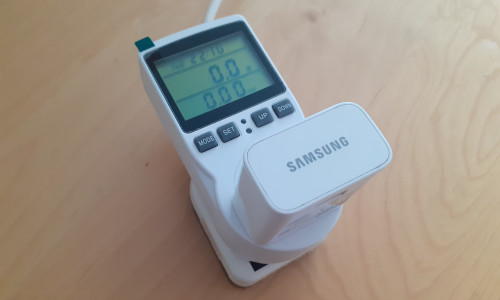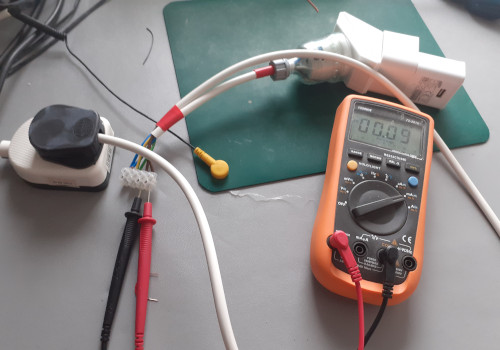Unloaded USB chargers
28 November 2022Back in early-2014 after I had finally secured accomodation my electricity bill was surprisingly high so I decided to do some statistical analysis on electricity meter readings and in short something like 85% was various forms of heat generation. In the summer of 2016 when I was using the company gym rather than my own shower my electricity bill fell to something around €45 per month all-in and ever since I have been highly skeptical of electric heating. Having seen an FT piece about a possible government energy efficency campaign I suspect that any such campaign would include things that don't actually make a difference, and as it happened not that long ago I tested for one of them: Don't leave mobile phone chargers plugged in. This advice makes no difference and below explains why. I had bought myself one of those plug-in energy meters which I had used to test other pieces of equipment in my flat and it gave intersting results, but the power usage of an unloaded USB charger was too low for it to measure.

It was able to give the voltage drop but that was it. The power usage was so low that as far as the meter was concerned there was nothing plugged into it. Clearly another much more sensitive method of measuring the current — and hence calculate the power usage — needed to be used.
The testing
To get the current draw I used the mains voltage harness that was utilised for various Covid-19 lockdown era projects to wire in my multi-meter in series with a switched-mode USB power supply that happened to be the closest to hand, and this setup is shown in the picture below. This setup uses an odd mix of British Type-G and New Zealand Type-I connectors which was down to what I happened to have in stock at the time when the cable was made, although as an added bonus it meant that someone who did not know the cable's intended purpose could not easily use it for something else. In the past the cable was used for triac-based power control but looking back some of the circuits I built were seriously dangerous.

The current draw of this unloaded USB charger was 90μA which is close to the lower bound of what the multi-meter could actually measure. At 245 volts this works out at 22 milliwatts which for mains power is nothing — at £0.45 per kWh leaving this thing plugged in for an entire year would cost a bit under nine pence. At that price the potential wear-and-tear shortening the charger's life could just as easily offset any saving from unplugging it when not in use. The typical switched-mode power supply is all about keeping a capacitor charged to a certain voltage, and with no actual output load the current draw consists of current leakage and losses in the switching process. Some of this is power usage of the sensing and switching circuitry but I suspect inefficencies in the AC-to-DC rectification account for a large portion of the 22mW idle-state power consumption.